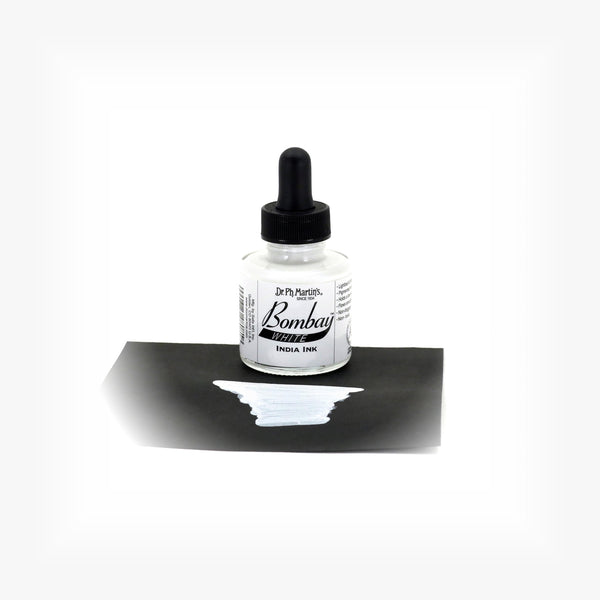

John Speed (1542-1629), ‘Asia’, in John Speed, The Theatre of the Empire of Great Britaine … As also A Prospect of the most famous Parts of the World (London: Printed for Thomas Bassett and Richard Chiswell, 1676). IMAGE 1: An English cartographer’s vision of Asia in the seventeenth century.
#Bombay white india ink free#
If you would like to consult further resources on global history, feel free to visit our ‘ Further Resources‘ page. If you have any thoughts, questions, or comments about this episode, or would like to pitch us an idea for a new episode, feel free to email us at or send us a message on our website’s contact form, facebook, twitter, or instagram.

Veevers over skype about his new book on the history of the early modern English East India Company in Asia, discussing subjects including the relationships between the Company and Asian ‘elites’, Company servants and the formation of ethnically mixed families, and the importance of studying the British Empire today. His first monograph, titled The Origins of the British Empire in Asia, 1600 – 1750, was published by Cambridge University Press this year.Ībout three weeks ago, Chase spoke with Dr. He is also the co-editor of The Corporation as a Protagonist in Global History, c.1550 to 1750 (Brill, 2018). Pettigrew (eds), The East India Company: Essays on Anglo-Indian Connection (Routledge, 2016), 175 – 192. He is the author of academic articles and book chapters including: ‘” Inhabitants of the Universe”: Global Families, Kinship Networks and the Formation of the Early Modern Colonial State in Asia‘, Journal of Global History, 10/1 ( 2015), 99 – 121, ‘” The Company as their Lords and the Deputy as a Great Rajah”: Imperial Expansion and the English East India Company on the West Coast of Sumatra, 1685 – 1730‘, Journal of Imperial and Commonwealth History, 41/5 (2013), 687 – 709, and ‘ The Contested State: Political Authority and the Decentred Foundations of the Early Modern Colonial State in Asia‘, in Mahesh Gopalan and William A. Veevers is ‘ interested in all aspects of early modern imperial and global history, with a particular focus on the European presence in Asia in the seventeenth and eighteenth centuries.’ His current Leverhulme project is titled ‘Transnational Constitutions: Asian Governance in a Global World’. David Veevers, a Leverhulme Trust Early Career Fellow at Queen Mary, University of London. All colours are brilliant and transparent, except Black and White, which are opaque and have excellent covering power.Welcome to the twelfth episode of the Global History Podcast. Inks can be diluted with water and used with brushes in traditional watercolour techniques or in dip pens, technical drawing pens, and airbrushes.

Whether you're using a BRUSH, REFILLABLE BRUSH, DIP PEN, FOUNTAIN PEN, TECHNICAL PEN, RULING PEN, or AIRBRUSH with your NON-CLOGGINGNON-SPREADING and WATERPROOF BOMBAY INKS.All colours are a matte finish (even the metallics) but can be easily varnished to give them a glossy look.The cap is DROPPER TOPPED for controlled mixing ability and with their HIGH TRANSPARENCY INTEGRATED PALETTE and interminability, there is no end to the colour combos you can make.Not only is it ACID-FREE making it ARCHIVAL GRADE but these inks are pigment-based, not dye-based, so they’re non-staining and super easy to control and completely LIGHTFAST.


 0 kommentar(er)
0 kommentar(er)
